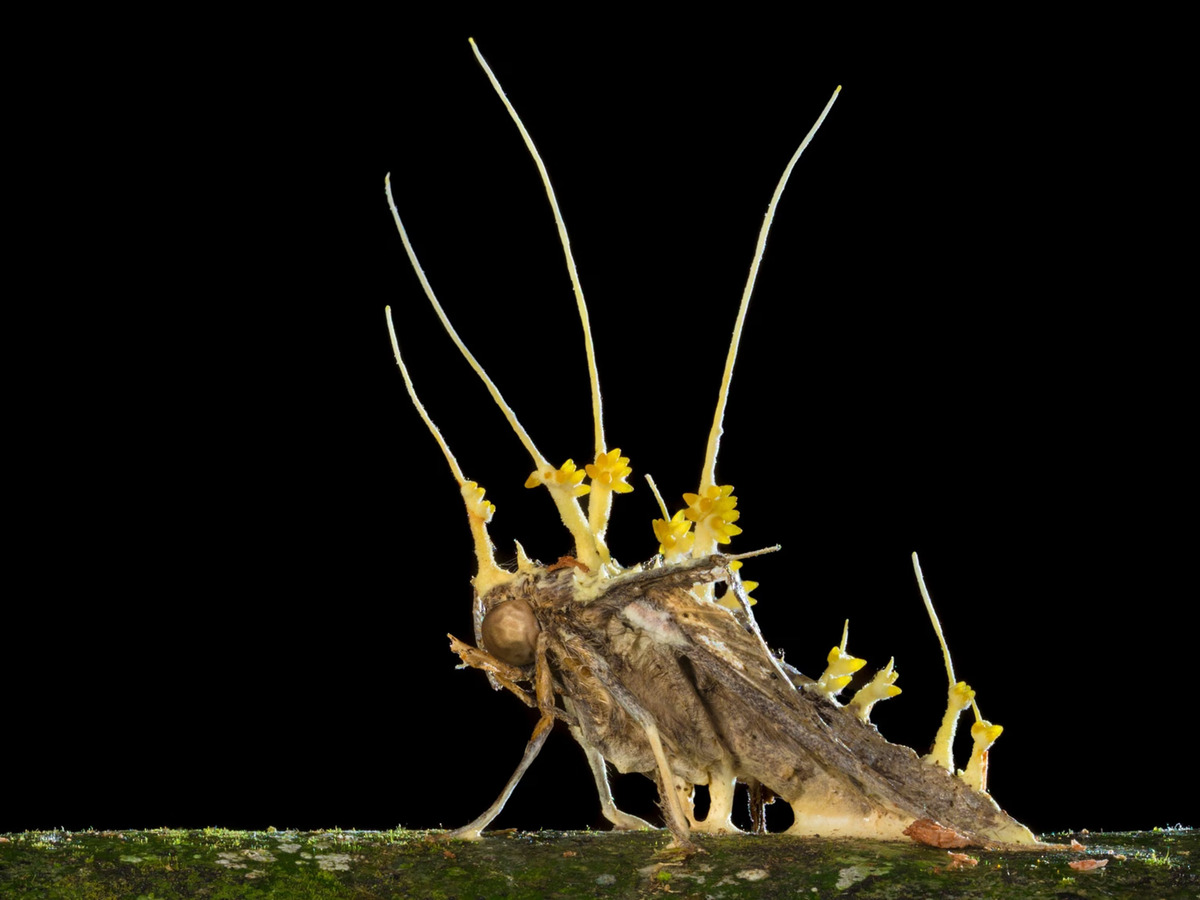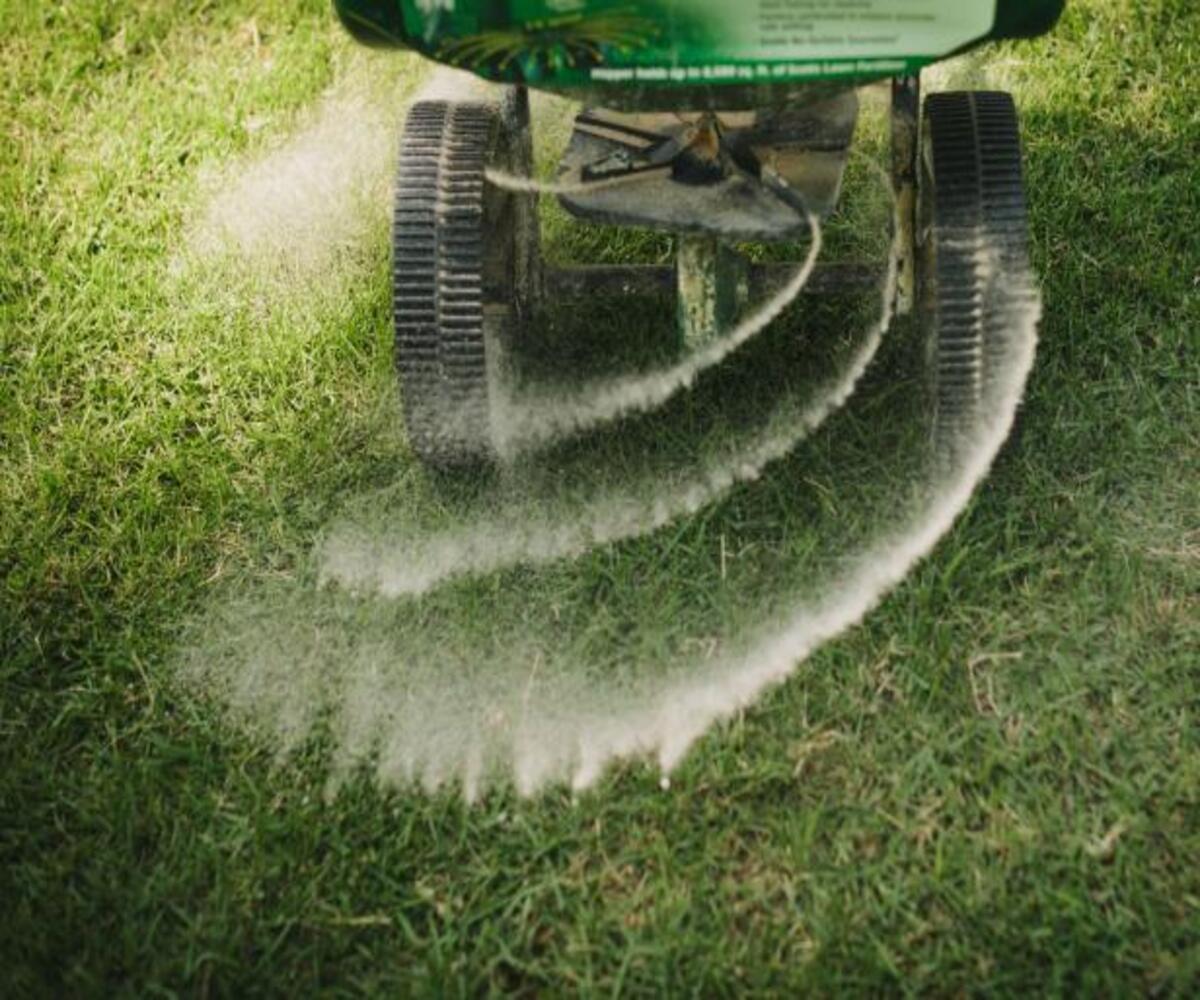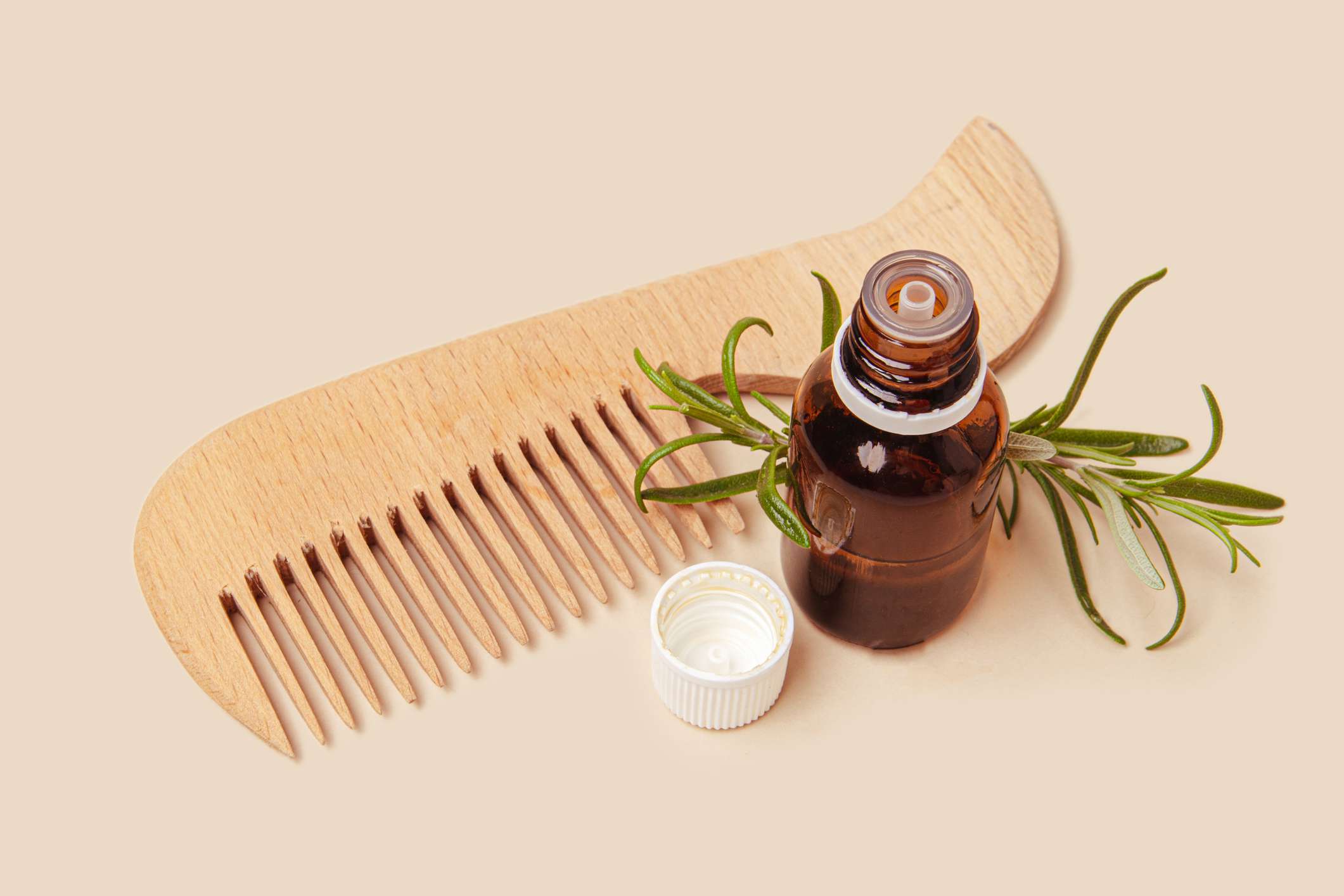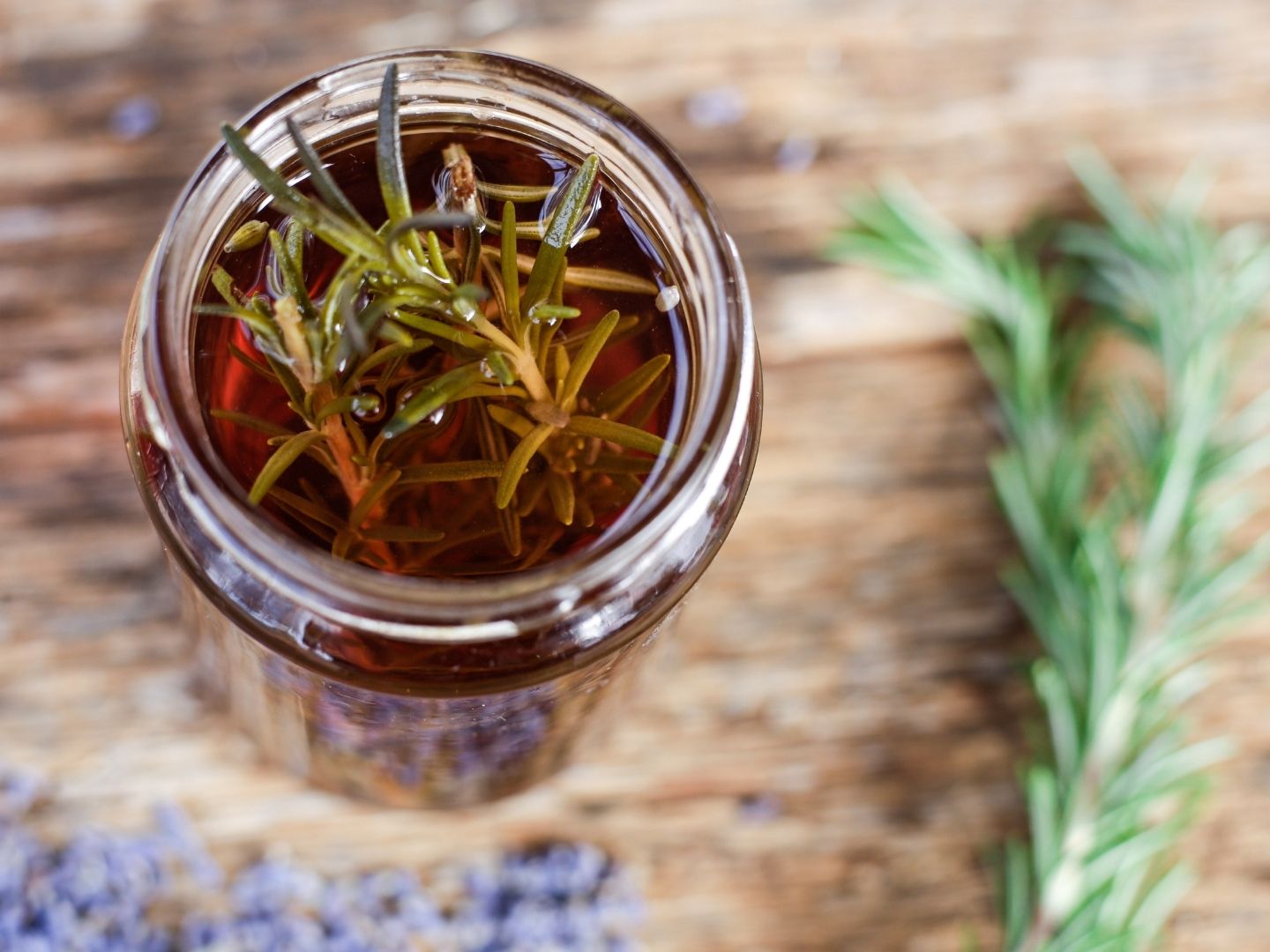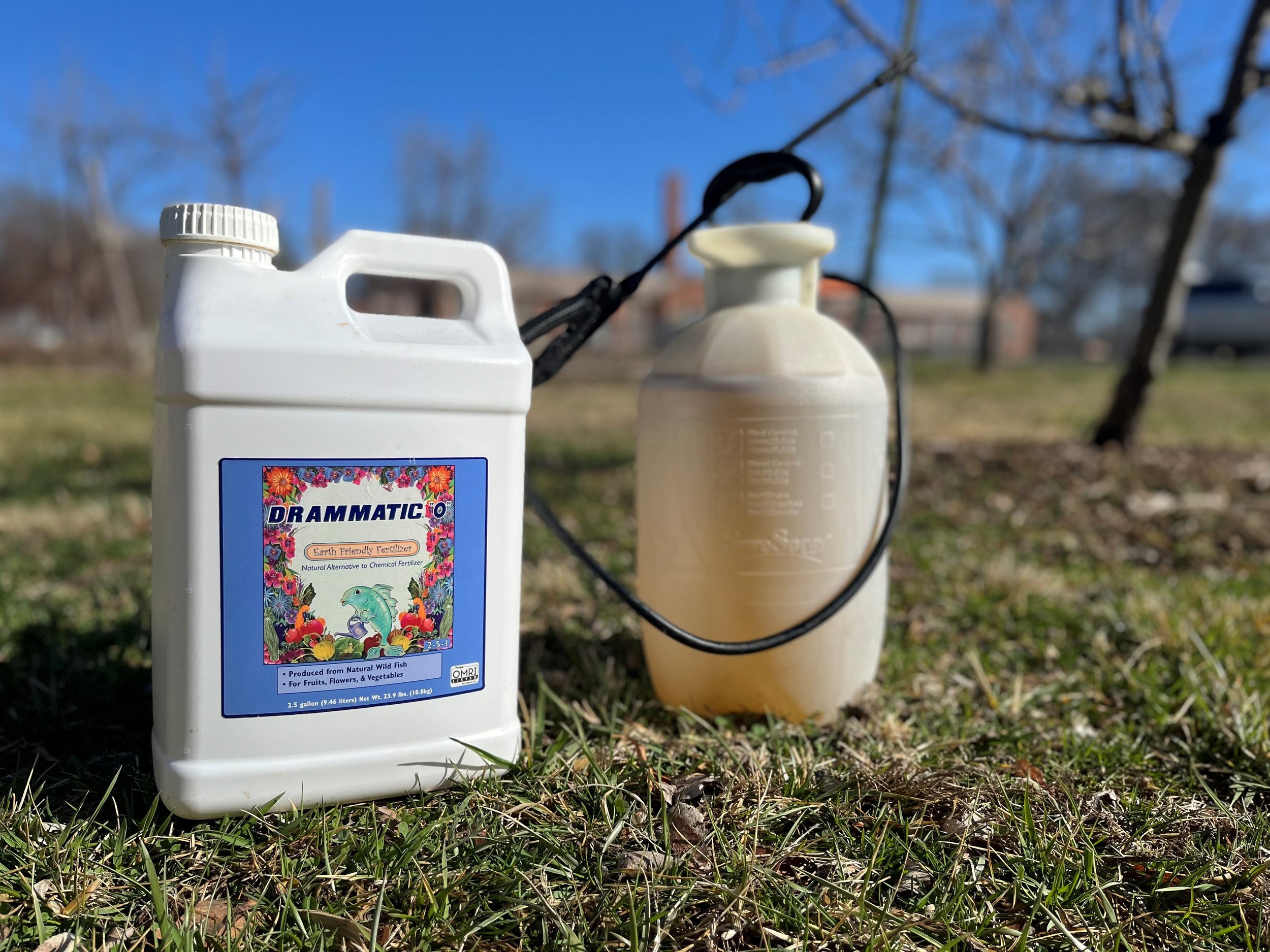Home>Gardening Basics>Getting Started>What Does A Cultivation Technician Do


Getting Started
What Does A Cultivation Technician Do
Published: January 25, 2024
Learn all about what a cultivation technician does and how to get started in this rewarding career. Explore the responsibilities, skills, and training required to become a successful cultivation technician.
(Many of the links in this article redirect to a specific reviewed product. Your purchase of these products through affiliate links helps to generate commission for Chicagolandgardening.com, at no extra cost. Learn more)
Table of Contents
Introduction
A cultivation technician plays a crucial role in the cannabis industry, contributing to the successful growth and development of cannabis plants. With the increasing legalization of cannabis for medicinal and recreational purposes, the demand for skilled cultivation technicians has risen significantly. These professionals are responsible for ensuring the optimal growth, health, and potency of cannabis plants through careful monitoring and implementation of cultivation techniques.
As a cultivation technician, you play an essential role in every stage of the plant’s lifecycle, from seed to harvest. Your expertise and attention to detail are critical in maintaining consistent quality, maximizing yields, and ensuring compliance with legal and safety regulations.
Working in a cultivation facility, you are part of a team that creates an environment conducive to the growth and cultivation of cannabis plants. This includes controlling lighting, temperature, humidity, and nutrient levels to create the ideal conditions for plant growth.
Your role as a cultivation technician is not only limited to plant care. You will also have to keep accurate records, comply with regulatory guidelines, and collaborate with other team members to ensure a smooth workflow.
In this article, we will explore the responsibilities, skills, and techniques employed by cultivation technicians to cultivate high-quality cannabis plants. We will also discuss the equipment and tools they use, pest and disease management strategies, and the process of harvesting and processing cannabis plants.
Whether you are already working as a cultivation technician or considering a career in the cannabis industry, this article will provide you with valuable insights into the essential aspects of the job and help you understand the unique challenges and rewards of being a cultivation technician.
Responsibilities of a Cultivation Technician
A cultivation technician is responsible for various tasks related to the cultivation and maintenance of cannabis plants. These responsibilities ensure the optimal growth and health of the plants throughout their lifecycle. Here are some of the key responsibilities of a cultivation technician:
- Propagation: Cultivation technicians oversee the propagation process, which involves germinating seeds or taking cuttings from mother plants to create new plants. They ensure that the plants have the right conditions for successful germination and rooting.
- Transplanting: Once the seedlings have reached a certain size, cultivation technicians carefully transplant them into larger containers or grow mediums. They ensure that the plants are handled gently to avoid any stress or damage during the process.
- Watering and Nutrient Management: Cultivation technicians monitor the moisture levels in the growing medium and adjust watering schedules as per the plant’s needs. They also mix and administer the appropriate nutrient solutions to ensure optimal plant growth and health.
- Lighting and Climate Control: Knowing the importance of light and its impact on plant growth, cultivation technicians manage lighting schedules and ensure that the plants receive the right amount and intensity of light. They also maintain proper temperature and humidity levels in the cultivation area to create an ideal growing environment.
- Pruning and Training: To promote vigorous growth and maximize yields, cultivation technicians perform pruning and training techniques to shape the plants. This involves removing unwanted branches and leaves, as well as using techniques like topping or LST (low-stress training) to encourage more lateral growth.
- Pest and Disease Monitoring: Cultivation technicians regularly inspect plants for any signs of pests, diseases, or nutrient deficiencies. They take proactive measures to prevent and manage such issues, which may include the use of organic or chemical-based treatments.
- Harvesting and Trimming: Cultivation technicians play a vital role in the harvesting process. They determine the optimal time to harvest based on visual cues and trichome development. They carefully cut and hang the plants for drying, and later trim the dried buds to remove excess leaves and stems.
- Cleanliness and Sanitation: Maintaining a clean and sanitized cultivation area is crucial to prevent the spread of pests, diseases, and contaminants. Cultivation technicians follow strict sanitation protocols, including cleaning and sterilizing equipment and maintaining proper hygiene practices.
These responsibilities require attention to detail, the ability to work with precision, and a strong understanding of plant biology and cultivation techniques. Cultivation technicians must also stay updated with industry best practices and regulations to ensure compliance and deliver high-quality cannabis products to consumers.
Cultivation Techniques
Successful cultivation of cannabis requires a combination of science, skill, and experience. Cultivation technicians utilize various techniques to optimize plant growth and maximize yields. Here are some commonly used cultivation techniques:
- Screen of Green (SCROG): This technique involves using a screen or net to train the plants’ branches to grow horizontally. By exposing more buds to light, SCROG increases the potential for higher yields and encourages even bud development.
- Sea of Green (SOG): In the SOG method, cultivation technicians focus on growing a large number of smaller-sized plants in a tight space. By reducing the vegetative phase and maintaining a shorter overall grow cycle, this technique maximizes productivity and allows for faster turnover.
- Hydroponics: Hydroponic cultivation involves growing plants in a soil-less medium, with nutrient-rich water supplying essential elements directly to the plant roots. This technique provides precise control over nutrient uptake and water balance, resulting in faster growth and larger yields.
- Organic Cultivation: Organic cultivation techniques prioritize the use of natural and biodegradable inputs, avoiding synthetic fertilizers and pesticides. Organic cultivation aims to promote soil health, biodiversity, and sustainability, producing cannabis that is free from chemical residues.
- High-Stress Training (HST): HST techniques like topping, fimming, and super cropping involve intentionally stressing the plants to promote lateral growth and increase bud sites. By manipulating the plants’ shape and structure, cultivation technicians can achieve better light penetration and higher bud production.
- Low-Stress Training (LST): LST involves gently bending and tying down the branches of the plants to create a more even canopy. This technique promotes better light distribution, improves airflow, and reduces the risk of mold or mildew formation.
- Defoliation: Cultivation technicians may perform selective defoliation by removing some of the plant’s leaves to open up the canopy and improve light penetration. This technique can increase bud development and overall plant health when done with care and in the appropriate stages of growth.
It’s important to note that different cultivation techniques may be more suitable for specific strains or growing conditions. Cultivation technicians must consider factors such as space limitations, resource availability, and desired outcomes when choosing the most appropriate technique for a particular crop.
By employing these cultivation techniques, cultivation technicians can effectively manage plant growth, enhance bud development, and ultimately produce high-quality cannabis products for consumers.
Equipment and Tools
Cultivation technicians rely on a variety of equipment and tools to create and maintain an optimal growing environment for cannabis plants. These tools help facilitate various cultivation tasks and ensure the successful growth and development of the plants. Here are some essential equipment and tools used by cultivation technicians:
- Grow Lights: Adequate lighting is crucial for photosynthesis and proper plant growth. Cultivation technicians utilize different types of grow lights, such as high-intensity discharge (HID) lights, light-emitting diodes (LEDs), or fluorescent lights, depending on the specific needs of the plants and the available space.
- Ventilation System: A ventilation system is essential for maintaining proper airflow and controlling temperature and humidity levels within the cultivation area. It includes fans, exhaust systems, and carbon filters to remove stale air and odors while introducing fresh air.
- Hydroponic Systems: When employing hydroponic cultivation, cultivation technicians utilize systems such as ebb and flow, deep water culture (DWC), or nutrient film technique (NFT) to supply the plants with water and nutrients directly to the root system.
- Climate Control Devices: Temperature and humidity are critical factors in maintaining a healthy growing environment. Climate control devices, such as thermostats and humidifiers, help regulate these conditions and ensure optimal plant growth and performance.
- Pruning Shears and Trimming Scissors: These tools are essential for pruning, trimming, and manicuring the plants during different stages of growth. They allow cultivation technicians to safely remove unwanted leaves, branches, or buds, promoting airflow and preventing the spread of pests or diseases.
- pH and EC Meters: Monitoring and adjusting the pH and electrical conductivity (EC) levels of the nutrient solution is vital for maintaining optimal nutrient uptake. Cultivation technicians use pH and EC meters to measure and regulate these levels to ensure proper plant nutrition.
- Propagation Tools: For cloning or starting new plants from cuttings, cultivation technicians use tools such as rooting hormones, scalpels, and cloning machines to encourage healthy root growth and establish new plants.
- Protective Gear: Cultivation technicians prioritize safety and wear appropriate protective gear, including gloves, masks, safety glasses, and coveralls, to protect themselves from potential hazards, such as pesticide exposure or injuries during pruning or trimming activities.
It’s important for cultivation technicians to also regularly maintain and clean their equipment to prevent the spread of pests and diseases between plants. Having the right tools and equipment not only enhances efficiency but also ensures a safe and productive cultivation environment.
Pest and Disease Management
Pests and diseases pose significant threats to the health and productivity of cannabis plants. Cultivation technicians employ various strategies to prevent, identify, and control these issues. Effective pest and disease management is crucial to ensure the optimal growth and quality of the plants. Here are some common pest and disease management techniques used by cultivation technicians:
- Preventive Measures: Cultivation technicians implement preventive measures to minimize the risk of pests and diseases. This includes maintaining a clean and sanitized cultivation area, regularly inspecting plants for signs of infestation or disease, and implementing strict quarantine protocols for new plants or equipment.
- Biological Controls: Using beneficial insects, such as ladybugs or predatory mites, can help control common cannabis pests like aphids or spider mites. These natural predators feed on harmful insects, reducing the need for chemical pesticides.
- Integrated Pest Management (IPM): IPM is an approach that combines multiple pest control strategies to achieve effective and sustainable pest management. It involves monitoring pest populations, accurately identifying pests and diseases, employing biological controls, and utilizing targeted pesticides only when necessary.
- Cultural Practices: Proper cultural practices, such as maintaining adequate spacing between plants, providing proper ventilation, and avoiding overwatering, promote healthier plants and minimize the risk of disease development. Cultivation technicians also practice strict sanitation, removing and disposing of infected plant material to prevent the spread of diseases.
- Chemical Pesticides: In some cases, cultivation technicians may need to resort to chemical pesticides to control severe pest infestations or rapidly spreading diseases. However, they should carefully follow safety guidelines, use approved pesticides specific to cannabis, and adhere to the required waiting period before harvest to ensure product safety.
- Organic Pest Control: Many cultivation facilities prioritize using organic pest control methods to minimize the impact on the environment and the final product. This can include the use of natural, plant-based insecticides or beneficial microbes that suppress harmful pests and enhance plant health.
- Educational Training: Cultivation technicians also undergo training to develop a comprehensive understanding of pests and diseases and their management strategies. This allows them to quickly identify potential issues, take appropriate action, and provide ongoing plant care based on the specific requirements of different cannabis strains.
By implementing a proactive and integrated approach to pest and disease management, cultivation technicians minimize the risk to plant health, reduce crop loss, and maintain the overall vitality of the cultivation operation.
Plant Maintenance
Plant maintenance is a critical aspect of being a cultivation technician. Regular care and monitoring of cannabis plants are essential for ensuring their health, vitality, and productivity. Cultivation technicians perform various tasks to maintain and support the optimal growth of the plants throughout their lifecycle. Here are some key plant maintenance practices undertaken by cultivation technicians:
- Watering: Proper watering is crucial for plant health. Cultivation technicians monitor the moisture levels in the growing medium and adjust the watering frequency and volume accordingly. They strike a balance between avoiding overwatering, which can lead to root rot, and underwatering, which can cause stress and hinder growth.
- Nutrient Management: Cultivation technicians provide the plants with the necessary nutrients for healthy growth and development. They administer nutrient solutions in appropriate concentrations and ratios, taking into account the specific needs of different stages of growth, such as vegetative, flowering, and ripening.
- Support and Training: As cannabis plants grow, cultivation technicians provide support by using trellises, stakes, or netting to help the plants maintain an upright posture. This prevents branch breakage and allows for better light penetration, airflow, and overall plant structure.
- Monitoring and Adjusting Environmental Factors: Cultivation technicians constantly monitor environmental factors such as temperature, humidity, and CO2 levels to ensure they are within suitable ranges for optimal plant growth. They make adjustments as needed to create a stable and favorable growing environment.
- Leaf and Canopy Management: Cultivation technicians regularly inspect the plants’ leaves for signs of nutrient deficiencies, pests, or diseases. They remove any yellowed or damaged leaves to maintain a healthy canopy and prevent the spread of pathogens.
- Topping and Pruning: Strategic pruning helps maintain the desired shape of the plants, encourages lateral branching, and increases air circulation to minimize the risk of mold or mildew. Cultivation technicians selectively remove specific branches or shoots to promote more robust development and even bud distribution.
- Monitoring and Adjusting Light Levels: Keeping a close eye on light intensity and duration is crucial for proper plant development. Cultivation technicians adjust the distance between the plants and the grow lights, as well as the lighting schedule, to ensure the plants receive the right amount and quality of light.
- Training Techniques: Cultivation technicians use training techniques such as bending, tying, or topping to manipulate the plant’s structure and enhance light distribution. These techniques promote better bud development, increase yields, and create a more manageable canopy.
Through diligent plant maintenance, cultivation technicians ensure that the cannabis plants thrive and reach their full potential. By closely monitoring and addressing the plants’ needs, they contribute to the overall success of the cultivation operation.
Harvest and Processing
The harvest and processing stage is a crucial part of a cultivation technician’s responsibilities. It involves carefully timing the harvest, properly handling the plants, and processing the harvested material to ensure the highest quality cannabis products. Here are the key steps involved in the harvest and processing process:
- Harvest Timing: Cultivation technicians closely monitor the plants for visual cues and trichome development to determine the optimal time for harvest. Harvesting too early or too late can significantly impact the cannabinoid and terpene profiles and overall potency of the final product.
- Plant Preparation: Before harvest, cultivation technicians carefully remove large fan leaves and branches to make the trimming process more efficient. They also ensure that the plants are well-hydrated before cutting to minimize stress and prevent excessive wilting.
- Cutting and Drying: Cultivation technicians make clean cuts at the base of the plant to separate it from the root ball. They hang the plants upside down in a temperature- and humidity-controlled drying room or tent. Proper drying is crucial to preserve terpenes and prevent mold or mildew formation.
- Trimming: Once the plants are dried, cultivation technicians carefully trim away excess leaves and stems from the buds. The goal is to achieve an aesthetically pleasing and marketable product while removing any undesirable material that could impact the quality or smoking experience.
- Curing: After trimming, cultivation technicians cure the buds by placing them in airtight containers, such as glass jars, for a period of several weeks. Curing allows the buds to slowly release moisture while enhancing their flavors, aromas, and smoothness.
- Quality Control: Cultivation technicians conduct thorough quality control checks during the harvest and processing stage. They inspect buds for any signs of mold, pests, or physical damage, ensuring that only the highest-quality flowers make it to the final packaging and sale.
- Processing for Extracts: In addition to dried flower, cultivation technicians may also process the harvested material into different forms such as concentrates, oils, or edibles. This involves using extraction methods, such as solvent extraction or CO2 extraction, to isolate cannabinoids and terpenes for various product applications.
- Packaging and Storage: Once the cannabis products are prepared, cultivation technicians carefully package them, ensuring compliance with labeling and regulatory requirements. They store the products in proper conditions to maintain their freshness, potency, and shelf life.
The harvest and processing stage requires attention to detail, precision, and adherence to strict regulatory guidelines. Cultivation technicians play a vital role in ensuring that the cannabis products meet high-quality standards and meet the expectations of consumers.
Record-keeping and Compliance
Record-keeping and compliance are integral aspects of a cultivation technician’s role in the cannabis industry. As a heavily regulated industry, it is essential to maintain accurate records and ensure compliance with local, state, and federal regulations. Here are the key components of record-keeping and compliance for cultivation technicians:
- Cultivation Logs: Cultivation technicians maintain detailed cultivation logs that document important information about the plants’ growth and development. This includes data on watering and nutrient schedules, environmental conditions, pest and disease management activities, and any modifications or adjustments made during the cultivation process.
- Inventory Management: Accurate inventory management is crucial for regulatory compliance. Cultivation technicians track the quantity of plants, harvested material, and various cannabis products in storage. They maintain meticulous records of strain information, batch numbers, and packaging dates to ensure effective tracking and auditing.
- Compliance with Licensing Regulations: Cultivation technicians work in compliance with legal requirements and licensing regulations specific to their region. They ensure that cultivation practices, such as plant limits, security measures, waste disposal, and product testing, adhere to the standards set by the governing authorities.
- Reporting and Documentation: Cultivation technicians may be responsible for preparing reports and providing documentation to regulatory agencies or auditors. This includes submitting detailed information on cultivation practices, inventory records, and testing results to demonstrate compliance with regulations and maintain transparency.
- Training and Education: Cultivation technicians undergo continuous training and education to stay updated with evolving regulations and best practices. They understand the specific compliance requirements related to cultivation techniques, pesticide usage, product labeling, and consumer safety.
- Compliance Audits: Cultivation facilities may undergo periodic compliance audits to ensure adherence to regulations and licensing guidelines. Cultivation technicians actively participate in these audits, providing necessary documentation, and demonstrating that the cultivation operation operates within the confines of the law.
- Security and Confidentiality: Cultivation technicians are responsible for maintaining the security and confidentiality of sensitive data, including patient or customer information, cultivation techniques, and proprietary processes. They adhere to strict protocols to safeguard data and protect the privacy of individuals involved in the cultivation process.
Efficient record-keeping and compliance not only ensure the legality of the cultivation operation but also contribute to the overall safety and accountability of the industry. By maintaining accurate records and following regulatory guidelines, cultivation technicians help build trust and credibility in the cannabis industry.
Skills and Qualifications
Being a cultivation technician requires a unique set of skills and qualifications to successfully carry out the responsibilities of the job. Here are the key skills and qualifications that cultivation technicians should possess:
- Plant Knowledge: Cultivation technicians should have a deep understanding of plant biology and the specific needs of cannabis plants. They should be familiar with the different strains, their growth characteristics, and the optimal environmental conditions required for successful cultivation.
- Attention to Detail: Precision and attention to detail are crucial traits for cultivation technicians. They must be meticulous in their record-keeping, monitoring, and plant care to ensure consistent quality, proper plant development, and compliance with regulations.
- Problem-Solving Ability: Cultivation technicians often face challenges such as pest infestations, nutrient deficiencies, or environmental issues. The ability to analyze problems, identify solutions, and implement effective strategies is essential for maintaining healthy plants and optimizing yields.
- Organizational Skills: Cultivation technicians need strong organizational skills to manage inventory, schedule tasks, and maintain a clean and efficient working environment. They should be able to prioritize tasks, maintain accurate records, and streamline workflows to ensure smooth operations.
- Physical Stamina: The role of a cultivation technician is physically demanding. They might spend long hours on their feet, bending, lifting, and moving heavy equipment. Physical stamina and the ability to withstand the demands of the job are essential.
- Communication and Teamwork: Cultivation technicians often work as part of a team and need strong communication and interpersonal skills. They must effectively communicate with team members, supervisors, and other professionals in the industry to coordinate tasks, share information, and address any cultivation-related issues.
- Analytical Skills: Cultivation technicians must possess analytical skills to monitor plant health, identify signs of pest infestations or diseases, and adjust cultivation techniques accordingly. They should be able to interpret data, make informed decisions, and implement appropriate solutions to optimize plant growth.
- Adaptability: The cannabis industry is constantly evolving, with new regulations, techniques, and technologies emerging. Cultivation technicians should be adaptable and open to learning new skills and approaches as industry standards evolve.
- Education and Training: While a formal education in horticulture or a related field is not always required, it can be beneficial. Many cultivation technicians pursue certifications or attend specialized training programs to enhance their knowledge and skills in cannabis cultivation.
- Legal Compliance: Cultivation technicians must have a sound understanding of local and state regulations regarding cannabis cultivation. They should remain updated on any changes or new requirements to ensure compliance and avoid any legal issues.
Having a combination of these skills and qualifications enables cultivation technicians to excel in their role, contribute to the success of the cultivation operation, and cultivate high-quality cannabis products.
Job Outlook and Salary
The job outlook for cultivation technicians in the cannabis industry is promising due to the increasing legalization and demand for cannabis products. As more states and countries embrace cannabis for medicinal and recreational use, the need for skilled cultivation technicians continues to grow. This presents excellent opportunities for individuals looking to enter or advance within the industry.
The salary of a cultivation technician can vary depending on factors such as experience, location, and the size of the cultivation operation. Entry-level cultivation technicians can expect to earn an average salary ranging from $30,000 to $40,000 per year. With increased experience, specialization, and managerial responsibilities, salaries can range from $40,000 to $70,000 or more per year.
It is important to note that the cannabis industry is subject to unique regulatory and market influences. As the industry matures and more competition emerges, market demand, supply, and regulatory factors may impact salary ranges. Additionally, larger cultivation operations or vertically integrated companies may offer higher salary opportunities and additional benefits.
In addition to salary, cultivation technicians may also have access to benefits such as health insurance, retirement plans, and paid time off. Some companies may offer opportunities for career growth and advancement, allowing cultivation technicians to progress into supervisory or management positions.
The job outlook in the cannabis industry is positive, with many cultivation technicians finding job security and exciting career opportunities. With increasing legalization and market demand, the industry is expected to continue expanding, resulting in a growing need for skilled cultivation professionals who can produce high-quality cannabis products.
However, it’s important to keep in mind that the cannabis industry can be competitive, and positions may require a certain level of experience, education, or specialized knowledge. Continuous learning, staying up-to-date with industry trends, and networking within the cannabis community can help cultivation technicians succeed and advance in their careers.
Conclusion
Being a cultivation technician in the cannabis industry offers a unique and rewarding career path. With the increasing legalization of cannabis and the growing demand for high-quality products, cultivation technicians play a vital role in ensuring the successful growth and development of cannabis plants.
In this article, we discussed the responsibilities, skills, and techniques employed by cultivation technicians. From propagation and transplanting to pest management and harvest processing, cultivation technicians are involved in every stage of the plant’s lifecycle. Their attention to detail, knowledge of plant biology, and ability to adapt to changing industry regulations are essential for achieving optimal plant health and maximizing yields.
Furthermore, we explored the equipment and tools used by cultivation technicians, the importance of record-keeping and compliance, and the job outlook and salary expectations in the industry. As the cannabis industry continues to evolve, cultivation technicians must stay abreast of the latest cultivation techniques, regulations, and industry standards.
It is important to remember that being a cultivation technician requires a unique combination of skills, including plant knowledge, attention to detail, problem-solving abilities, and strong organizational and communication skills. By cultivating these skills and continuously learning and adapting, cultivation technicians can excel in their roles and contribute to the growth and success of the cannabis industry.
Overall, being a cultivation technician offers an exciting career path with opportunities for personal and professional growth. With a strong foundation of knowledge, experience, and a passion for plants, cultivation technicians can make a significant impact in the cannabis industry and contribute to the production of high-quality cannabis products that benefit consumers worldwide.
